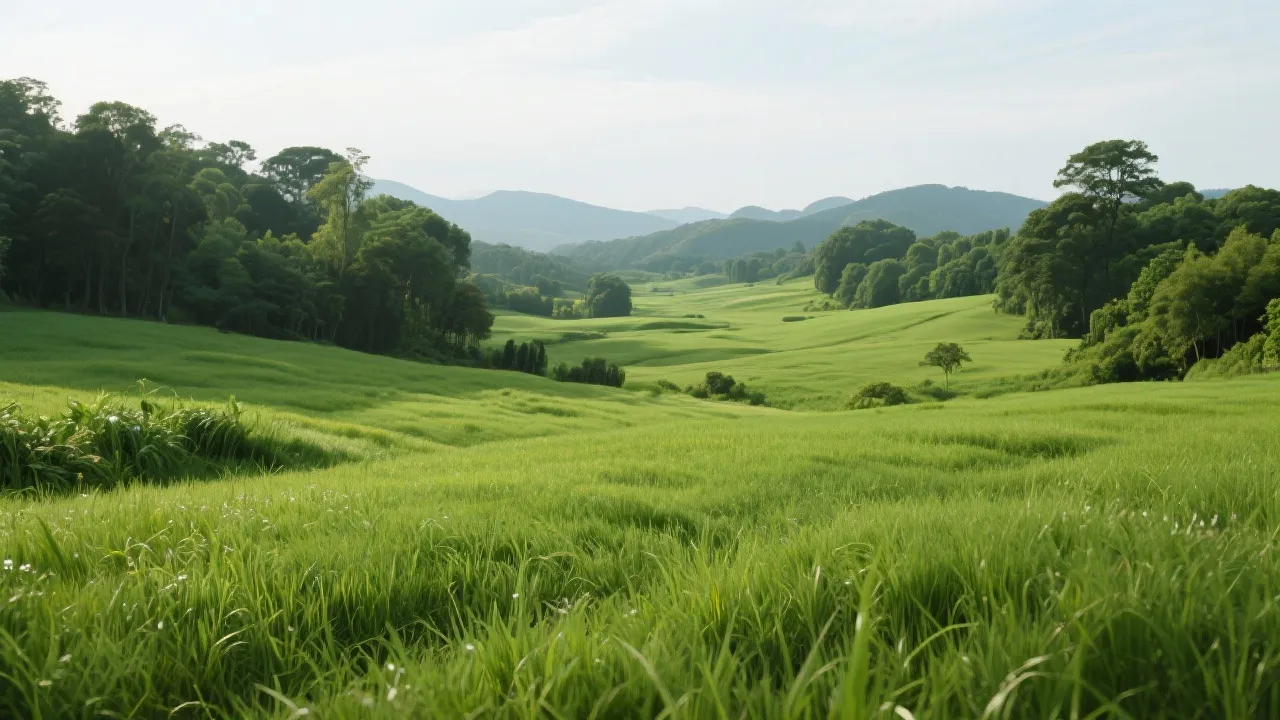Understanding Zanc Poa
Zanc Poa, a versatile grass species, thrives in diverse environments, contributing significantly to the ecology of various regions. Known for its subtle beauty and resilience, this grass plays an essential role in landscape aesthetics and soil conservation. Explore the significance and benefits of Zanc Poa in our in-depth analysis designed for those passionate about horticulture and environmental sustainability.

The Significance of Zanc Poa
Zanc Poa is a notable grass species that has achieved recognition due to its versatility and adaptability. Valued for its robustness, Zanc Poa seamlessly integrates into both natural and cultivated landscapes, providing ecological benefits such as soil stabilization and habitat creation for various organisms. Its aesthetic appeal also makes it a popular choice for ornamental purposes, lending lush and inviting greenery to gardens and parks. Throughout history, this grass has been leveraged not only for practical applications but also in cultural contexts, embodying an innate connection between nature and human endeavor.
Characteristics and Habitat
Not only is Zanc Poa aesthetically pleasing, it is also highly adaptable, thriving in a wide range of climatic and soil conditions. This adaptability makes it a valuable component in ecological restoration projects and landscape design. Zanc Poa typically prefers temperate climates but can adjust to subtropical regions, indicating its resilience to changes in environmental factors. Its ability to tolerate drought, flooding, and poor soil conditions demonstrates its evolutionary advantages. The grass’s fibrous roots also play a crucial role in its survival, allowing it to access moisture deep in the soil and thus continue to thrive in less-than-ideal circumstances.
The preference for full sunlight to partial shade allows Zanc Poa to occupy various ecological niches, from wild grasslands to urban parks. Such diversity in habitat means that Zanc Poa can contribute not just aesthetically but also ecologically, enhancing biodiversity in many environments.
Roles in Ecosystems
Zanc Poa contributes significantly to ecosystem stability by preventing soil erosion through its extensive root systems. These root systems anchor the soil, reducing runoff and conserving water. Additionally, Zanc Poa provides forage for wildlife and domestic animals, further enhancing its ecological value. Its role in carbon sequestration also contributes to reducing atmospheric carbon, underlining its environmental importance. This is especially essential as global warming poses an increasing threat. By absorbing CO2, Zanc Poa helps mitigate climate change, serving as a natural tool for carbon management.
Moreover, Zanc Poa serves as crucial support for numerous insect and animal species that rely on grasslands for their habitat. This includes not only small mammals and birds but also a variety of beneficial insects that contribute to pollination and pest control. The grass creates a multilayered habitat that fosters a diverse ecosystem, underscoring its importance beyond mere aesthetics.
Cultivation and Maintenance
The process of cultivating Zanc Poa is relatively straightforward, making it accessible for both amateur gardeners and professional landscapers. Given its hardy nature, it requires minimal maintenance once established. Regular trimming and occasional watering are sufficient to keep it in optimum condition, particularly during dry spells. This low-maintenance aspect is a key factor behind its popularity.
Propagation methods for Zanc Poa include seed sowing and vegetative propagation, with seeds exhibiting high germination rates. These methods empower gardeners and landscapers to efficiently expand their Zanc Poa lawns or erect new ornamental areas with ease. Additionally, the grass’s rapid growth rate helps establish coverage quickly, enhancing soil formation and preventing erosion in a relatively short time frame.
For maximum health, it is recommended to practice seasonal soil testing and amendment with organic matter. By incorporating compost or well-rotted manure into the soil, gardeners can enhance nutrient availability, thus supporting the grass's growth. Additionally, utilizing sustainable landscaping techniques such as mulching can retain moisture and suppress weed growth, which further reduces the workload for caretakers.
Zanc Poa in Landscape Architecture
In landscape architecture, Zanc Poa is favored for its fine texture and vibrant green color. It is often incorporated into urban gardens and park landscapes, where its ability to form dense swards creates visually appealing and functional open spaces. This grass is also used extensively in erosion control projects, where its root structure stabilizes slopes and riverbanks.
Furthermore, Zanc Poa can be a vital element in bioengineering projects, often employed in construction endeavors that aim to harmonize with the natural landscape. Its deployment within green roofs helps regulate temperature, manage stormwater runoff, and improve air quality. In urban environments, where concrete tends to dominate, Zanc Poa serves as a refreshing counterpoint, softening hardscapes while fostering a profound connection to nature for city dwellers.
Collaboration with local flora is also an essential aspect of landscape architecture involving Zanc Poa. By integrating native plants alongside this grass, landscape architects can create sustainable ecosystems that not only thrive but also support local wildlife. This practice enhances the environmental health of urban spaces, making Zanc Poa an advocating species for biodiversity in design.
Comparison Table: Zanc Poa Varieties
| Type | Characteristics | Top Use |
|---|---|---|
| Zanc Poa Alpina | Thrives in rocky terrains with high altitudes | Decorative rock gardens and alpine landscapes |
| Zanc Poa Pratensis | Dense, uniform growth with rich color | Lush green lawns and sporting fields |
| Zanc Poa Subterranea | Deep root system, excellent for soil structure | Soil conservation projects and agricultural uses |
Environmental Impact and Conservation
Zanc Poa supports biodiversity, providing a habitat for insects and small animals. The conservation efforts for this grass have been geared towards preserving its genetic diversity, which is crucial for adapting to environmental changes. Research on Zanc Poa can contribute to developing new strains capable of thriving under adverse conditions, further securing its role in ecological conservancy.
Particularly in areas facing climate instability, conserving varietals of Zanc Poa can prove beneficial for ecosystem resilience. Breeders and ecologists are exploring using this species in mixed plantings that can withstand temperature fluctuations and unpredictable weather patterns. This research underscores how Zanc Poa can not only survive but thrive, presenting opportunities for innovative farming and gardening techniques.
Conservation programs further transcend individual plant health, encouraging a holistic approach to landscape management. Implementing principles of agroecology can enable farmers and land managers to establish Zanc Poa populations that coexist with other perennial grasses, promoting overall soil health and biodiversity in both agricultural and urban settings. In addition, promoting public awareness about the benefits and adaptive potentials of Zanc Poa can engage communities in conservation efforts, fostering stewardship of green spaces.
FAQs
- What are the growth conditions for Zanc Poa? Zanc Poa requires moderate sunlight and well-drained soil, although it adapts to varied conditions. Ideal conditions are well-aerated soil with sufficient organic matter, promoting healthy growth.
- How often should I water Zanc Poa? Minimal watering is required, with more frequent watering during drought conditions. For best results, watering should occur early in the morning or later in the evening to minimize evaporation.
- Is Zanc Poa suitable for urban landscapes? Yes, its resilience makes it excellent for urban environments, offering both aesthetic and functional benefits such as reducing noise pollution and improving air quality.
- Can Zanc Poa be used in environmental restoration projects? Absolutely, its ability to stabilize soil and support biodiversity makes it ideal for restoration efforts, contributing to the rehabilitation of degraded ecosystems.
Conclusion
Zanc Poa stands out as an exemplary species of grass that combines beauty, functionality, and ecological benefits. From ornamental usage in landscaping to crucial roles in ecological conservation, it’s clear that Zanc Poa is more than just grass—it's a vital component of our natural landscapes. Whether for professional landscaping projects or home gardens, understanding its breadth of benefits can prove immensely beneficial for enthusiasts and environmentalists alike. With continued research and conservation efforts, Zanc Poa may not only thrive in our landscapes but also become integral to creating sustainable futures for urban and natural environments alike.




